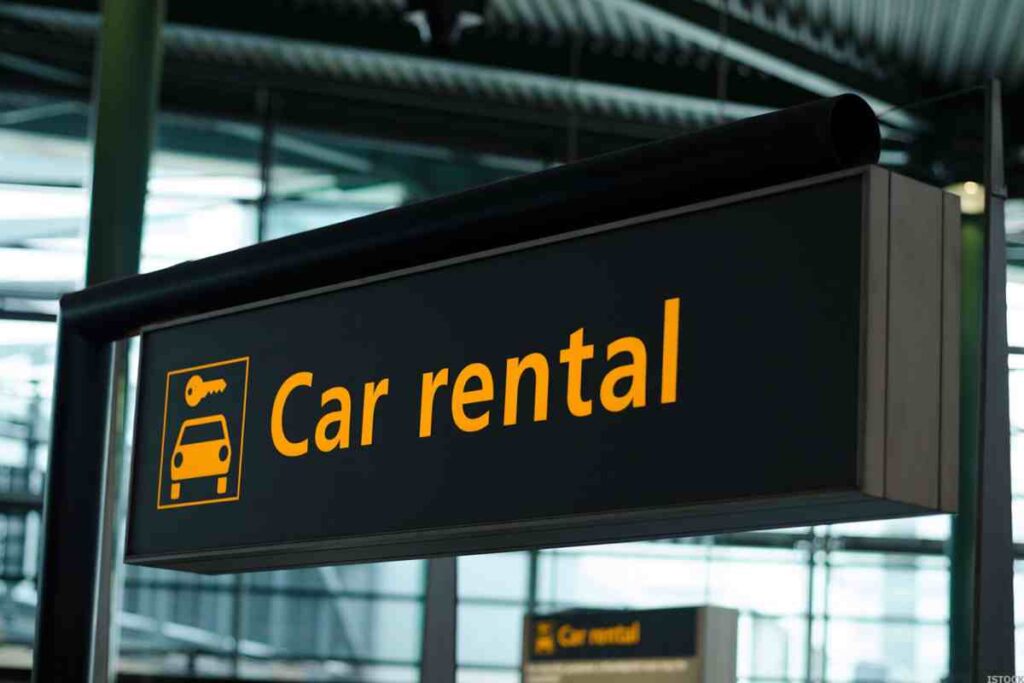Choosing the right car insurance can be tricky, especially for young drivers. One big question is whether to stick with their parents’ policy or to get their own. This choice can really affect your wallet, and it’s not always clear which is the better option. In this article, we’ll look at the pros and cons of each choice, talk about the legal stuff, and compare costs to help you decide. Whether you’re a young driver, a parent, or just curious, we hope to make this confusing topic a bit clearer and help you find the best way forward.
Understanding Car Insurance

Understanding the basics of car insurance is crucial for anyone who owns or drives a vehicle. Here’s a breakdown of the key terms and concepts:
- Premiums: This is the amount you pay for your car insurance coverage. Premiums can be paid monthly, quarterly, semi-annually, or annually, depending on your insurer and your preference. The premium amount is influenced by factors such as your age, driving record, type of vehicle, location, and coverage options.
- Deductible: A deductible is the amount of money you agree to pay out of pocket before your insurance coverage kicks in to cover a claim. For example, if you have a $500 deductible and you file a claim for $2,000 in damages, you would pay the first $500, and your insurance company would cover the remaining $1,500. Generally, choosing a higher deductible can lower your premiums, but it means you’ll pay more out of pocket if you have a claim.
- Coverage Limits: Car insurance policies have limits on the amount of coverage they provide for different types of incidents. For example, liability coverage has separate limits for bodily injury liability per person, bodily injury liability per accident, and property damage liability per accident. It’s important to choose coverage limits that adequately protect you financially in case of an accident.
Types of Coverage:
- Liability Coverage: This is mandatory in most states and covers the costs associated with injury, death, or property damage that you or your car cause to another person.
- Collision Coverage: It pays for damage to your vehicle resulting from a collision with another car or object.
- Comprehensive Coverage: This covers damage to your car caused by events other than collisions, such as theft, vandalism, or natural disasters.
- Personal Injury Protection (PIP): Also known as “no-fault insurance,” PIP covers medical expenses for you and your passengers regardless of who is at fault in an accident.
- Uninsured/Underinsured Motorist Coverage: This protects you if you’re in an accident with a driver who either doesn’t have insurance or doesn’t have enough insurance to cover the damages.
These are the key terms and types of coverage you’ll encounter when shopping for car insurance. It’s important to understand each type of coverage and consider your individual needs when selecting a policy.
Benefits of Staying on Parents’ Insurance
Staying on your parents’ car insurance policy can offer several advantages:
- Cost Savings: Typically, adding a young driver to an existing family policy is cheaper than getting a separate policy. Since parents often have established driving records and may qualify for discounts, such as multi-car or multi-policy discounts, the overall premium for the family policy may be lower.
- Access to Better Coverage: Parents may have already invested in comprehensive coverage or higher liability limits, providing better protection for their children at a lower cost than if the child were to purchase these coverages individually.
- Simplified Administration: Staying on your parents’ policy means you don’t have to deal with the administrative tasks associated with managing your own policy, such as setting up payments, renewing policies, or handling paperwork. This can be particularly advantageous for young adults who are busy with school, work, or other responsibilities.
- Parental Guidance and Support: Being on your parents’ insurance means you can rely on their expertise and guidance when navigating insurance-related matters. They can help you understand your policy, make informed decisions about coverage, and provide support if you need to file a claim.
- Continuity of Coverage: Staying on your parents’ policy ensures continuous coverage, even if you’re moving between locations, such as transitioning from school to a new job or relocating to a different city. This avoids potential coverage gaps that could occur when switching between policies.
- Building a Driving Record: Remaining on your parents’ policy allows you to continue building a positive driving record under their insurance. A good driving record can lead to lower premiums in the future when you eventually transition to your own policy.
- Flexibility for Life Transitions: Young adults may undergo significant life transitions, such as graduating from college, starting a career, or moving to a new city. Staying on your parents’ insurance provides flexibility during these transitions, allowing you to focus on other aspects of your life without worrying about changing insurance policies.
- Easier Access to Additional Coverage: If your parents have additional coverage options, such as roadside assistance or rental car reimbursement, you may be able to access these benefits without having to purchase them separately on your own policy.
Overall, staying on your parents’ car insurance can offer financial savings, administrative simplicity, and the comfort of parental guidance and support, making it an attractive option for many young drivers.
Drawbacks of Staying on Parents’ Insurance
While staying on your parents’ car insurance can have its advantages, there are also some potential drawbacks to consider:
- Increases Parents’ Premium: Adding a young driver to a policy can significantly raise the insurance premiums. This is because young drivers are generally considered high-risk due to their lack of driving experience.
- Liability Concerns: If the young driver is at fault in an accident, it could impact the parents’ liability and potentially their assets. This means that the parents could be held financially responsible for any damages caused by the young driver.
- Limited Independence: Staying on a parent’s policy may limit a young driver’s independence. Having their own policy allows them to manage their own coverage and understand the responsibilities that come with it.
- Residency Restrictions: You can stay on your parents’ car insurance as long as you live with them. Once you move out, you’ll need to get your own insurance policy.
- Geographical Limitations: Some insurance companies may have geographical limitations. If the young driver moves to a different city or state, they may not be covered under their parents’ policy.
- Dependency: Staying on a parent’s policy may prolong financial dependency. Having their own policy can be a step towards financial independence.
- Impact on Parents’ No-Claim Bonus: If the young driver has an accident, it could impact the parents’ no-claim bonus, leading to higher premiums in the future.
Considering these drawbacks alongside the benefits of staying on your parents’ insurance will help you make an informed decision about your car insurance coverage.
When It Makes Sense to Get Your Own Policy

Here are some scenarios where it might make sense for an individual to get their own car insurance policy:
- Moving to a Different State: If you’re moving to a different state, you may need to get your own policy as car insurance requirements vary from state to state. Your parents’ policy may not provide adequate coverage in your new location.
- Buying Your Own Vehicle: If you’re purchasing your own vehicle, it’s typically required by law to have insurance in your name. Additionally, the vehicle’s financing company may require you to have your own insurance policy.
- Customized Coverage Needs: If your driving habits or coverage needs differ significantly from your parents’, it may be beneficial to get your own policy. For example, if you have a long commute or need specialized coverage for a valuable vehicle, your parents’ policy may not provide adequate protection.
- Age and Driving Record: Young drivers often face higher insurance premiums due to their lack of driving experience. If you have a clean driving record and have reached an age where insurance premiums typically decrease, it might be a good time to consider getting your own policy to potentially lower your rates.
- Financial Independence: Getting your own car insurance policy can be a step toward financial independence and responsibility. It allows you to manage your own coverage and make decisions that align with your individual needs and preferences.
- Avoiding Conflicts in Coverage Needs: If you have specific coverage needs that differ from your parents’, such as higher liability limits or additional coverage for expensive personal belongings kept in your vehicle, it may be more practical to have your own policy tailored to your requirements.
- Parental Policy Limitations: Your parents’ policy may have limitations or restrictions that don’t suit your circumstances. For example, their policy might not cover rental car reimbursement or roadside assistance, which could be important to you.
- Preparing for the Future: Getting your own car insurance policy establishes a history of insurance coverage in your name, which can be beneficial when applying for future policies or seeking discounts based on continuous coverage.
By considering these scenarios, individuals can determine whether it’s appropriate to get their own car insurance policy rather than staying on their parents’ coverage.
Impact on Parents’ Policy
Adding a young driver to a parent’s car insurance policy can significantly impact the parents’ insurance rates. Here are the key factors to consider:
- Increased Premiums: When a teen driver is added to an existing policy, the average annual premium can increase by 82%. This substantial jump is due to the higher risk associated with inexperienced drivers.
- Risk Profile: Insurance companies assess risk based on driving history, age, and experience. Young drivers with no experience are statistically more likely to be involved in accidents, leading to higher insurance claims and costs.
- Age Matters: The younger the driver, the higher the rate. Teenagers are considered the riskiest demographic on the road. Their crash rate per mile driven is three times that of drivers aged 20 and older.
- Fatalities and Injuries: Motor vehicle crashes are the leading cause of death for U.S. teens. In 2016, 2,820 teens aged 16 to 19 were killed in accidents, and 235,845 were treated for crash injuries.
- Coverage Options: Adding a teen to a parent’s policy provides coverage for the young driver while potentially saving money compared to buying an individual policy.
- Type of Vehicle: The type and age of the car a teenager will be driving can impact the insurance cost. Generally, safer and more modest vehicles are cheaper to insure.
- Gender: Statistically, young male drivers are involved in more accidents than young female drivers, which can affect the insurance rates.
- Location: The area where the teen will be driving also plays a role. Urban areas with higher traffic density and theft rates may lead to higher premiums.
- Education: Completing a driver’s education course or defensive driving training can sometimes lower rates for young drivers.
- Good Student Discounts: Many insurance companies offer discounts for students who maintain a certain GPA, reflecting the correlation between good grades and responsible driving behavior.
- Policy Shopping: It’s beneficial to shop around and compare insurance rates from different providers to find the most cost-effective option for adding a young driver.
- Usage-Based Insurance: Some insurers offer usage-based insurance programs that monitor driving habits and can provide discounts for safe driving.
- Set Clear Expectations: Establishing clear driving rules and expectations for teen drivers can lead to safer driving habits, which may positively affect insurance rates over time.
- Regular Monitoring: Keeping an eye on the teen’s driving habits and making necessary adjustments to the policy can help manage costs and ensure proper coverage.
Cost Comparison
The cost comparison between staying on your parents’ insurance and getting individual insurance can vary greatly depending on several factors. Here’s a breakdown of key considerations for each option:
Staying on Parents’ Insurance:
- Cost Sharing: If you’re staying on your parents’ policy, you might be able to share the cost of the premium with them. This can result in significant savings compared to having your own separate policy.
- Multi-Vehicle Discount: If your parents have multiple vehicles insured with the same provider, you may benefit from a multi-vehicle discount, further reducing your portion of the premium.
- Good Student Discount: Many insurance companies offer discounts for young drivers who maintain good grades in school. If you’re a student, staying on your parents’ policy could allow you to take advantage of this discount.
- Longevity Discount: If your parents have been insured with the same provider for a long time, they may qualify for a longevity discount, which could extend to you as a covered driver.
Getting Individual Insurance:
- Personalized Coverage: Getting your own insurance policy allows you to customize coverage to fit your specific needs. This means you can choose the types and levels of coverage that make the most sense for your situation, which may result in better protection but could come at a higher cost.
- Age and Driving Record: Your age and driving record are significant factors in determining your insurance premium. If you have a clean driving record and are considered a low-risk driver, you may be able to find affordable individual insurance rates.
- Vehicle Type: The type of vehicle you drive can also impact your insurance premium. Generally, newer or more expensive vehicles will have higher insurance premiums due to the cost of repair or replacement.
- Location: Where you live can affect your insurance rates. Urban areas with higher traffic congestion and crime rates tend to have higher insurance premiums compared to rural areas.
- Discount Opportunities: While you may miss out on some discounts available through your parents’ policy, such as multi-vehicle discounts, you may qualify for other discounts as an individual policyholder, such as bundling multiple insurance policies (e.g., auto and renters insurance) with the same provider.
Is Car Insurance More Expensive If Used for Business?
Ultimately, the cost comparison between staying on your parents’ insurance and getting individual insurance will depend on your unique circumstances, including your driving history, the type of vehicle you drive, where you live, and the coverage options you choose. It’s essential to shop around and compare quotes from multiple insurance providers to find the most competitive rates for your situation.
Legal Aspects
Car insurance is regulated by both state and federal laws, and understanding the legal aspects is crucial for both drivers and insurance companies. Here are some key legal aspects of car insurance to consider:
- Legal Requirement: In most jurisdictions, car insurance is a legal requirement for drivers. Each state or country sets its own minimum insurance coverage requirements, which typically include liability insurance to cover damages to others in an accident.
- Financial Responsibility Laws: Many jurisdictions have financial responsibility laws, which mandate that drivers must be able to cover the costs of damages they cause in an accident. Car insurance is the most common way to fulfill this requirement.
- Proof of Insurance: Drivers are often required to carry proof of insurance, such as an insurance card, and present it upon request by law enforcement officers or when registering a vehicle.
- Penalties for Non-Compliance: Failure to maintain proper car insurance coverage can result in legal penalties, such as fines, license suspension, or even vehicle impoundment. Repeat offenses may lead to more severe consequences.
- Uninsured/Underinsured Motorist Coverage: Some jurisdictions require or offer uninsured/underinsured motorist coverage, which protects drivers if they’re involved in an accident with someone who doesn’t have insurance or has insufficient coverage.
- No-Fault Insurance Laws: In no-fault insurance states or countries, each driver’s insurance company covers their own medical expenses and damages, regardless of who caused the accident. This system aims to streamline the claims process and reduce litigation.
- Mandatory Reporting: Drivers are often required to promptly report accidents to their insurance company and, in some cases, to law enforcement authorities. Failure to report an accident could result in coverage denial or legal consequences.
Understanding these legal aspects of car insurance is essential for drivers to comply with state laws, protect themselves financially, and ensure they have adequate coverage in the event of an accident.
FAQs
Q 1. What is a No-Claim Bonus in car insurance?
Ans. A No-Claim Bonus (NCB) is a discount given by the insurer to the policyholder for every claim-free year. It is rewarded to the policyholder in the form of a discount on the premium during policy renewal.
Q 2. What happens to my car insurance if I get a traffic violation?
Ans. Traffic violations can increase your car insurance premiums. The amount of the increase depends on the severity of the violation. Serious infractions like DUIs can cause a significant increase, while minor infractions like speeding tickets can result in a smaller increase.
Q 3. Can I switch from my parents’ car insurance to my own policy at any time?
Ans. Yes, you can switch from your parents’ car insurance to your own policy at any time. However, it’s important to ensure you have continuous coverage to avoid a lapse, which can lead to higher premiums.
Q 4. How does getting married affect my car insurance if I’m on my parents’ policy?
Ans. Getting married can affect your car insurance. If you’re on your parents’ policy, you’ll likely need to get your own policy with your spouse. Many insurance companies offer discounts to married couples.
Q 5. What are the implications of car modifications on my insurance premium?
Ans. Car modifications can increase your insurance premiums. This is because modifications can increase the value of your car, make it more likely to be stolen, or increase the risk of accidents.
Conclusion
In conclusion, the decision to stay on your parents’ car insurance or to get your own policy is a complex one that depends on various factors. These include the cost of premiums, the level of coverage needed, the impact on your or your parents’ driving records, and the legal requirements in your state. While staying on your parents’ policy might be more cost-effective in the short term, getting your own policy could provide more long-term benefits, such as building a no-claim bonus and gaining financial independence.
It’s important to weigh all these factors and consult with an insurance professional before making a decision. Remember, every driver’s situation is unique, so what works best for one person might not work best for another. Always do your research and make the decision that’s right for you.

Join Shubham, a finance enthusiast with a mission to empower readers with the knowledge and tools to achieve financial freedom. Discover smart financial advice and unlock your financial potential.


